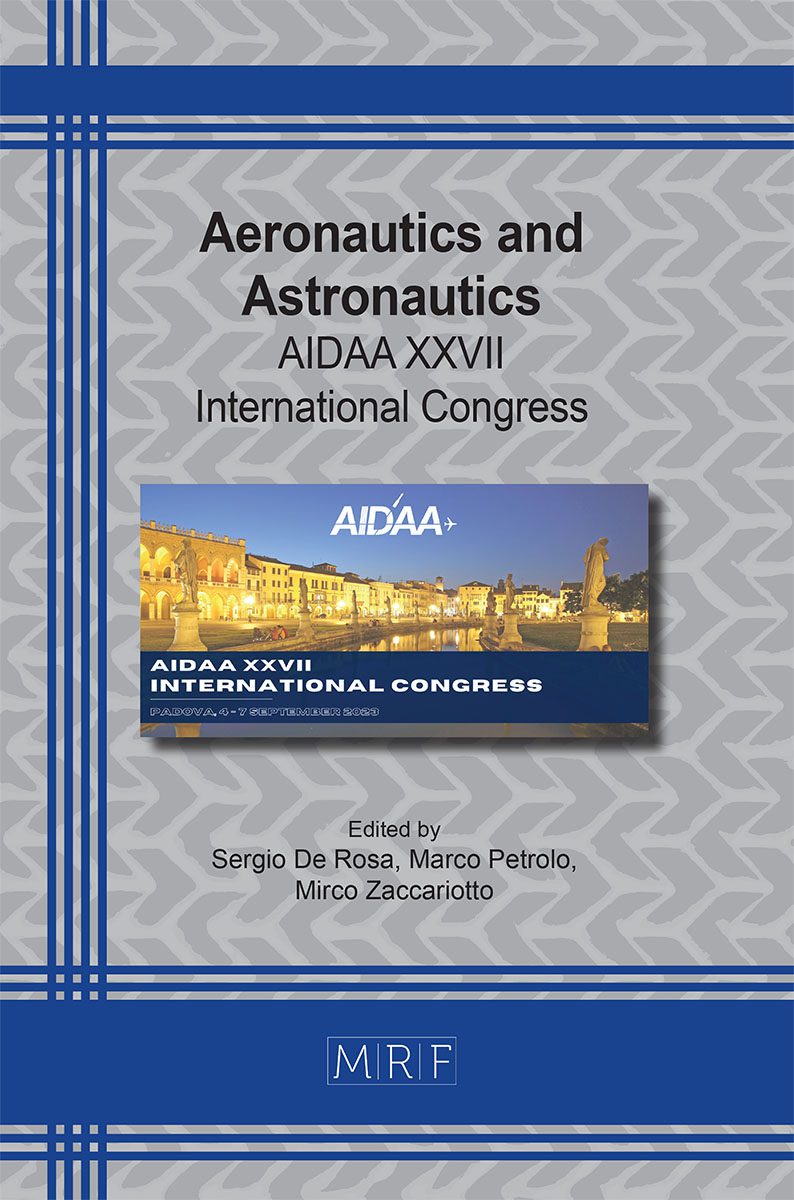Performance assessment of low-by-pass turbofan engines for low-boom civil supersonic aircraft
Francesco Piccionello, Grazia Piccirillo , Nicole Viola
download PDFAbstract. This paper presents an approach to evaluate the performance of low-bypass turbofan engines without afterburner for a low-boom supersonic aircraft operating at Mach 1.5. The proposed method focuses on optimizing the propulsive performance by minimizing fuel consumption while meeting mission profile requirements. The study contributes to the MORE&LESS project, providing methods for rapidly designing novel supersonic propulsion concepts with improved environmental performance. The research conducts a thermodynamic analysis for on-design engine conditions based on the Modified Specific Heat (MSH) gas model. Specific non-installed thrust and fuel consumption are estimated for cruise phase. Then, the engine cycle analysis is also performed to study off-design performance, including simplified models to account for engine drag and calculate installed thrust and fuel consumption. MATLAB simulations are employed to determine thrust and consumption based on the specific mission profile of the Mach 1.5 case-study, allowing for comparison of different engine types. Ongoing work involves the optimization of engine parameters such as compression ratio, bypass ratio, and turbine inlet temperature, targeting further fuel consumption reduction and pollutant emission estimations.
Keywords
Low-By-Pass Turbofan, Supersonic Aircraft, Conceptual Design, MORE&LESS
Published online 11/1/2023, 4 pages
Copyright © 2023 by the author(s)
Published under license by Materials Research Forum LLC., Millersville PA, USA
Citation: Francesco Piccionello, Grazia Piccirillo , Nicole Viola, Performance assessment of low-by-pass turbofan engines for low-boom civil supersonic aircraft, Materials Research Proceedings, Vol. 37, pp 57-60, 2023
DOI: https://doi.org/10.21741/9781644902813-13
The article was published as article 13 of the book Aeronautics and Astronautics
![]() Content from this work may be used under the terms of the Creative Commons Attribution 3.0 license. Any further distribution of this work must maintain attribution to the author(s) and the title of the work, journal citation and DOI.
Content from this work may be used under the terms of the Creative Commons Attribution 3.0 license. Any further distribution of this work must maintain attribution to the author(s) and the title of the work, journal citation and DOI.
References
[1] Aria Tahmasebi, Linköpings. (n.d.). Turbofan Engine Modeling – For the The fighter Aircraft of The Future. Aeronautical Engineering Spring 2022.
[2] Debiasi, M. (2003). Conceptual Development of Quiet Turbofan Engines for Supersonic Aircraft. Journal of Propulsion and Power.
[3] Fronseca, V. F., & Lacava, R. F. (2018). Turbofan engine performance optimization on aircraft cruise thrust level. Journal of the brazilian Society of Mechanical Sciences and Engineering.
[4] J. Mattingly and W. Heiser United States Air Force Academy, Colaro Springs. (1986). Performance Estimation of the Mixed Flow, Afterburning, Cooled, Two-spool Turbofan Engine with Bleed and Power Extraction, 1986. AIAA. https://doi.org/10.2514/6.1986-1757
[5] Mattingly, J. D., & Jr., J. D. (1996). Elements of Turbine Propulsion. McGraw-Hill Series in Aeronautical and Aerospace Engineering.
[6] Mattingly, J. D., Heiser, W. H., & Pratt, D. T. (2002). Aircraft Engine Design Second Edition. AIAA Education Series. https://doi.org/10.2514/4.861444
[7] Melker Nordqvist, J. k. (2017). Conceptual Design of a Turbofan Engine for Supersonic Business Jet (ISABE-2021-22635).












